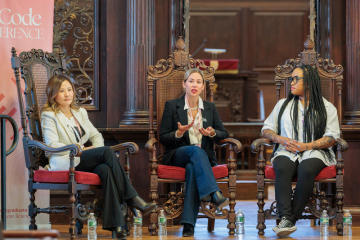
With bird flu this year and COVID-19 in 2020, public health officials have faced the challenge of keeping the public informed about an unexpected, unpredictable, and evolving threat.
Because COVID-19 was a new virus, scientific knowledge and public health guidance understandably shifted over time. But those changes in guidance were a primary driver in eroding trust in health organizations for millions of Americans.
In recent polls and focus groups the de Beaumont Foundation and the CDC Foundation conducted with pollster Frank Luntz, many people said that even now, they don’t understand why recommendations changed so dramatically throughout the pandemic, and some suspect that changes were arbitrary or politically motivated. That confusion and distrust opened the door for misinformation to spread.
The COVID-19 pandemic was not an anomaly. The nature of public health and emerging threats means there are a lot of unknowns when public health officials and communicators need to keep the public informed and save lives.
One key to doing this successfully is using messaging that directly acknowledges that uncertainty and allows for flexibility and updates. For example:
“This recommendation is based on what we know now. As we learn more, we’ll give you updates and may revise this guidance.”
Using this framing requires being direct, humble, and comfortable with not always having all the answers. In our focus groups, many participants said that when public health professionals explicitly acknowledge what they know and what they don’t know, they are more likely to trust them. Don’t be afraid to say, “We don’t know” or “We don’t know yet.”
Our research has tested different ways to explain why public health guidance changes, and this sample language may help you craft your own messaging:
- As public health leaders, we are committed to providing you with the most accurate information we have at the time, and we continue to monitor health issues and provide updates as needed.
- To protect us all, we have a responsibility to tell you what we currently know and update you as we learn more as the research evolves.
- When public health guidance is issued, it is done with respect for the scientific process — it can be questioned, and it can be changed when new data emerges.
- Sometimes our initial recommendations are based on limited information, and it’s our responsibility to let you know that from the start — just as it’s our responsibility to explain how and when recommendations change.
- When we learn new things, we modify our recommendations to best protect your health.
- As our understanding evolves, it’s natural that health recommendations will also change.
Participants in our focus groups offered the following advice for public health professionals:
- It starts with a strong dose of humility. Say, “We don’t know how this variant is going to react now. Here’s our best recommendation, based on years of experience in science.”
- They need to say what they know, what the facts are, and how they know them — and also what they don’t know and what they’re doing to find it out.
- Say, “This is the best data we have now. We’ve come to our conclusion because of this.”
- My question would be, “What are you and your family doing? Not what you’re telling me to do. What is it that you are doing in this situation?” That’s what I want to know.
In addition to the need for public health professionals to be humble and relatable, our research has also shown it’s critical to emphasize the important role of personal choice in making health decisions. Messaging and recommendations should be framed to give people the information they need to make the best possible decisions for themselves and their families. As one focus group participant put it, “Instead of telling us what to do, they should say they want us to have the best information and tools so we can make the best decisions for ourselves.”




